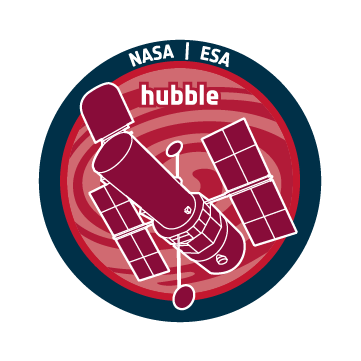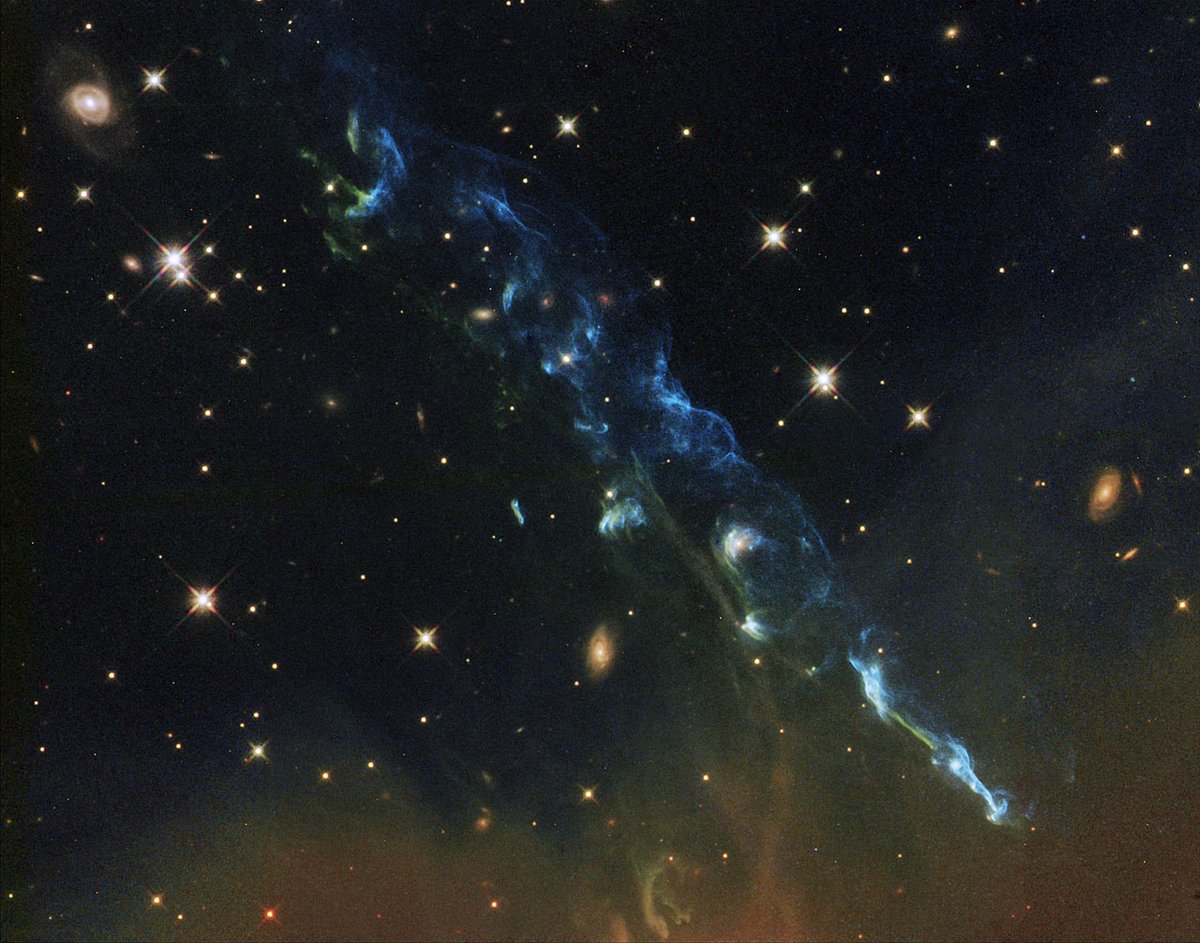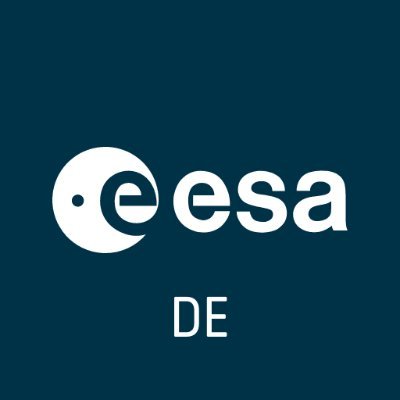#hubbletopimage résultats de recherche
Our #HubbleTopImage features a panoramic view of a star-forming region ⭐ 30 Doradus resides 170,000 light-years away in the Large Magellanic Cloud. No known star-forming region in our galaxy is as large or as prolific! Read more: ow.ly/oXxn50X8jnE

Our #HubbleTopImage pinpoints a distant protocluster of galaxies 🌌 In a sky survey made in near-infrared light, Hubble spotted five galaxies clustered together. They are so distant that their light has taken 13.1 billion years to reach us! 1/2
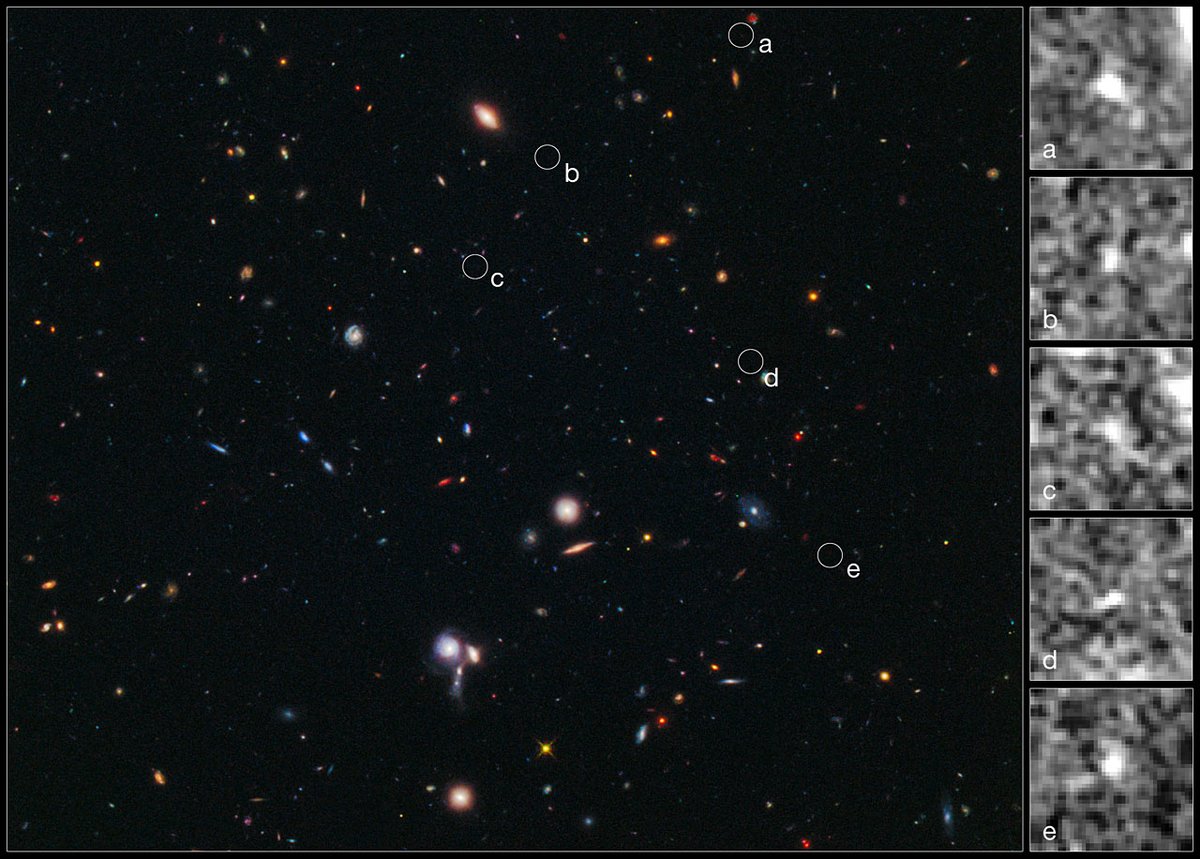
Our #HubbleTopImage features the glittering jewels of Messier 9 💎 Messier 9 is a globular cluster located close to the centre of the Milky Way. This ball of stars is too faint to see with the naked eye, but Hubble can see over 250,000 individual stars shining in it! 1/2

This #HubbleTopImage was once the deepest-ever view of the Universe! It was assembled from ten years of Hubble observations taken of a patch of sky within the original Hubble Ultra Deep Field. 1/3

Hubble unmasks a ghost galaxy 👻 in this #HubbleTopImage Astronomers used Hubble to unmask the dim dwarf galaxy Leo IV, which is practically invisible, its stars virtually indistinguishable from the background. 1/3

Our #HubbleTopImage is a classic portrait of a barred spiral galaxy 🌌 Hubble’s image of NGC 1073 is, in many ways, the archetypal portrait of a barred spiral. However, there are a few quirks here… 1/3

Our #HubbleTopImage features a monster galaxy 👹 that may have been stirred up by black-hole mischief! This view of the elliptical galaxy A2261-BCG was captured by Hubble in 2012. The galaxy has a puffy core measuring about 10,000 light-years across – about three times larger…
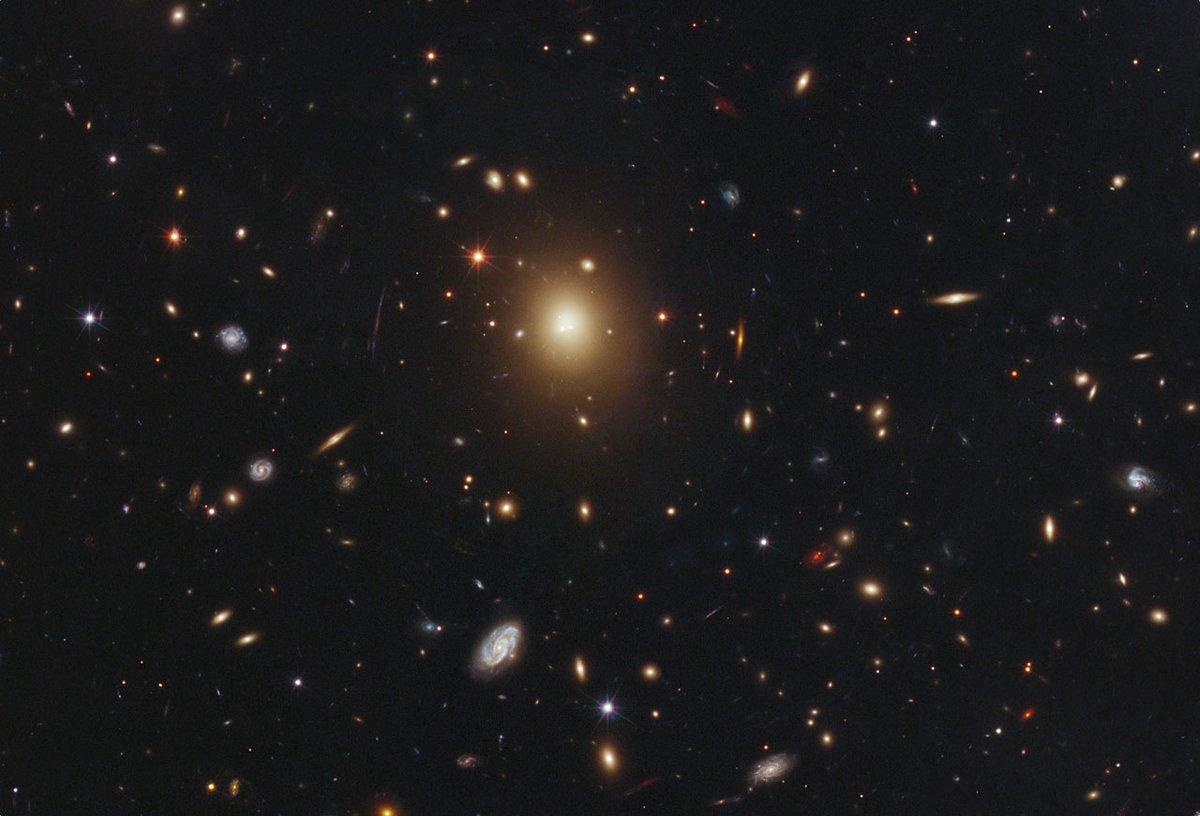
Our #HubbleTopImage showcases a multiwavelength observation of Jupiter, offering a distinctive panchromatic perspective that has provided insights into the altitude and distribution of the planet's haze and particles.⬇️

Our #HubbleTopImage revisits the Ring Nebula! From Earth’s perspective, the nebula appears like a simple elliptical shape. Observations combining ground-based data and Hubble data, however, revealed that it is more like a doughnut 🍩 1/3

A cosmic celebrity takes centre stage in our #HubbleTopImage 🐴⭐ This image of the Horsehead Nebula, which was captured to celebrate Hubble’s 23rd year in orbit, shows the region in infrared light. 1/3

Our #HubbleTopImage digs up hidden treasure 💎 in the Large Magellanic Cloud! LHA 120-N 11, seen here, is a particularly bright star-forming region, consisting of several pockets of gas and star formation. 1/3

Our #HubbleTopImage features the glittering jewels of Messier 9 Messier 9 is a globular cluster located close to the centre of the Milky Way. This ball of stars is too faint to see with the naked eye, but the NASA/ESA Hubble Space Telescope can see over 250,000 individual ⬇️
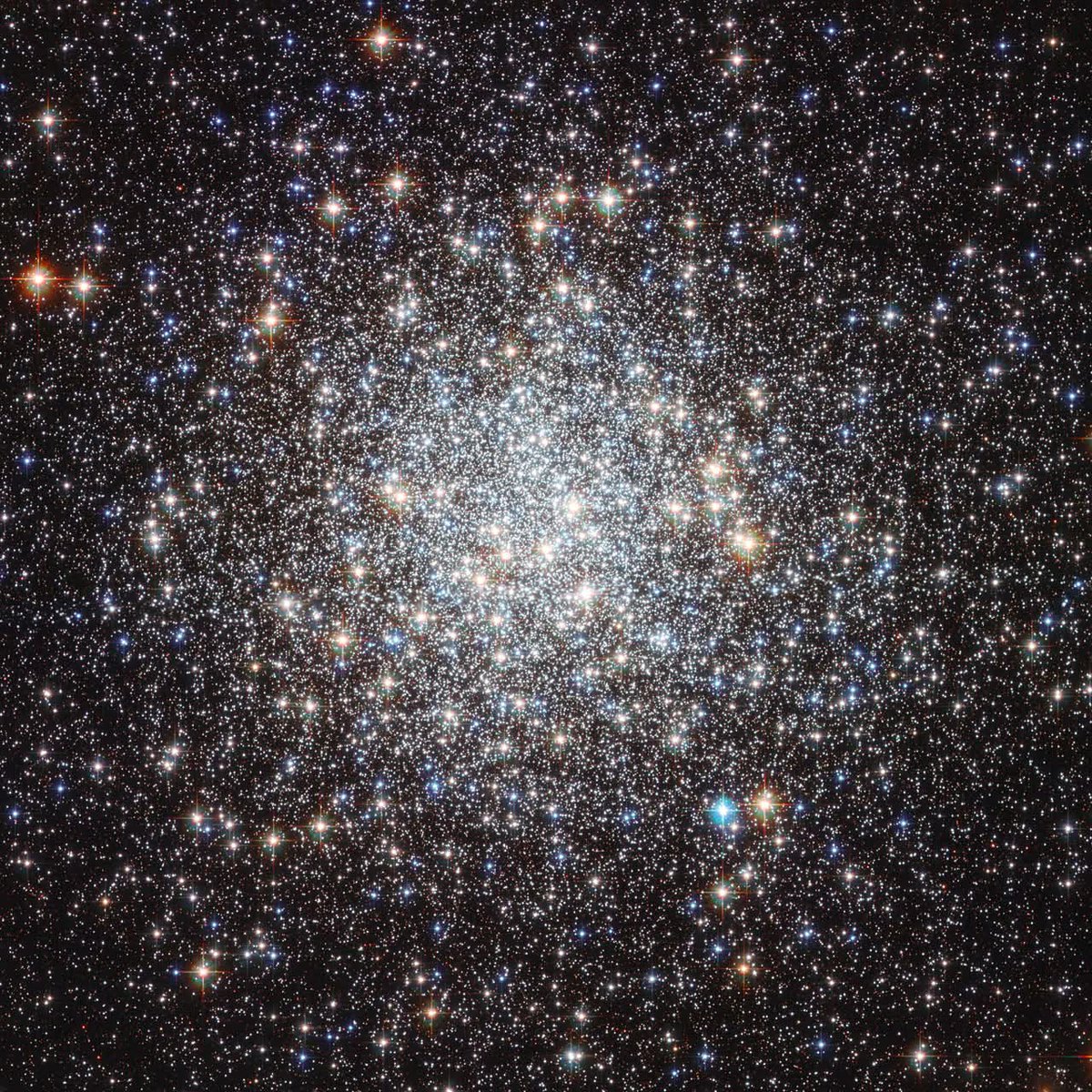
Our #HubbleTopImage features a spiral galaxy with a secret 🤫 Located just over 20 million light-years away, Messier 106 is one of the nearest spiral galaxies to our own. Despite its typical appearance, it hides a secret at its centre… 1/3

Our #HubbleTopImage captures the planetary nebula PN Hb 12! 🦋 Its butterfly-like structure formed as a Sun-like star approached the end of its life and puffed its outer layers into the surrounding space. 1/3

Behold the cosmic cradle captured in our #HubbleTopImage: a far-flung protocluster of galaxies shimmering in the ancient void Peering through the veil of near-infrared light in a sweeping sky survey, the mighty NASA/ESA Hubble Space Telescope has unveiled a tight-knit group of…

Our #HubbleTopImage features the massive galaxy cluster Abell 1689! Abell 1689 acts like a cosmic lens 🔍 magnifying the light from objects lying behind it and making it possible for astronomers to explore incredibly distant regions of space. 1/3

Our #HubbleTopImage features a spectacular light show! 🎆 RS Puppis is a type of variable star known as a Cepheid variable. They pulsate relatively slowly – this one varies in brightness by almost a factor of five every 40 or so days.
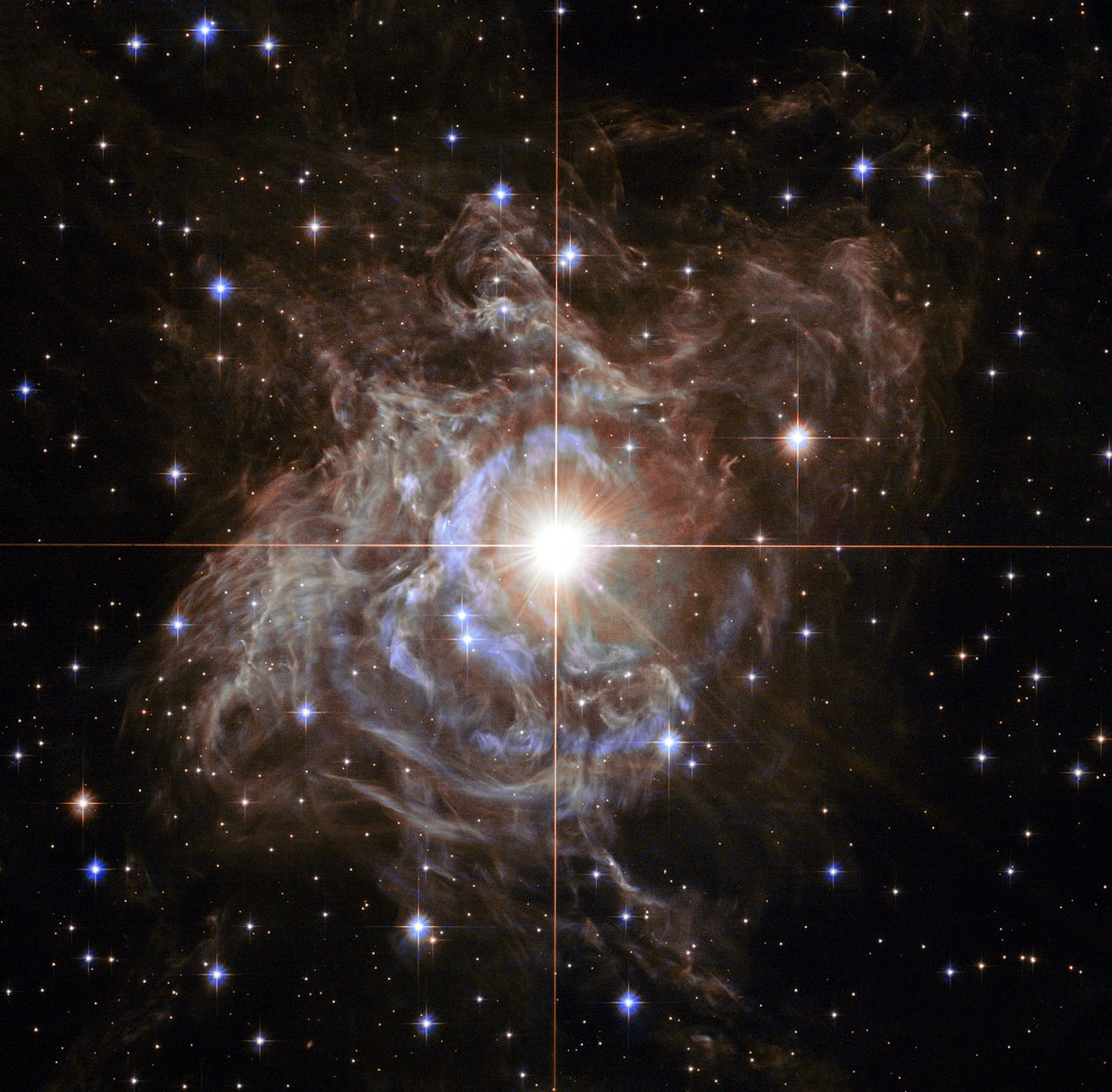
Our #HubbleTopImage features a distant gravitational lens! 🔍 The circle of light in this image is formed by the light of a distant starbursting dwarf galaxy being projected and magnified by the gravity of a nearer galaxy. 1/3
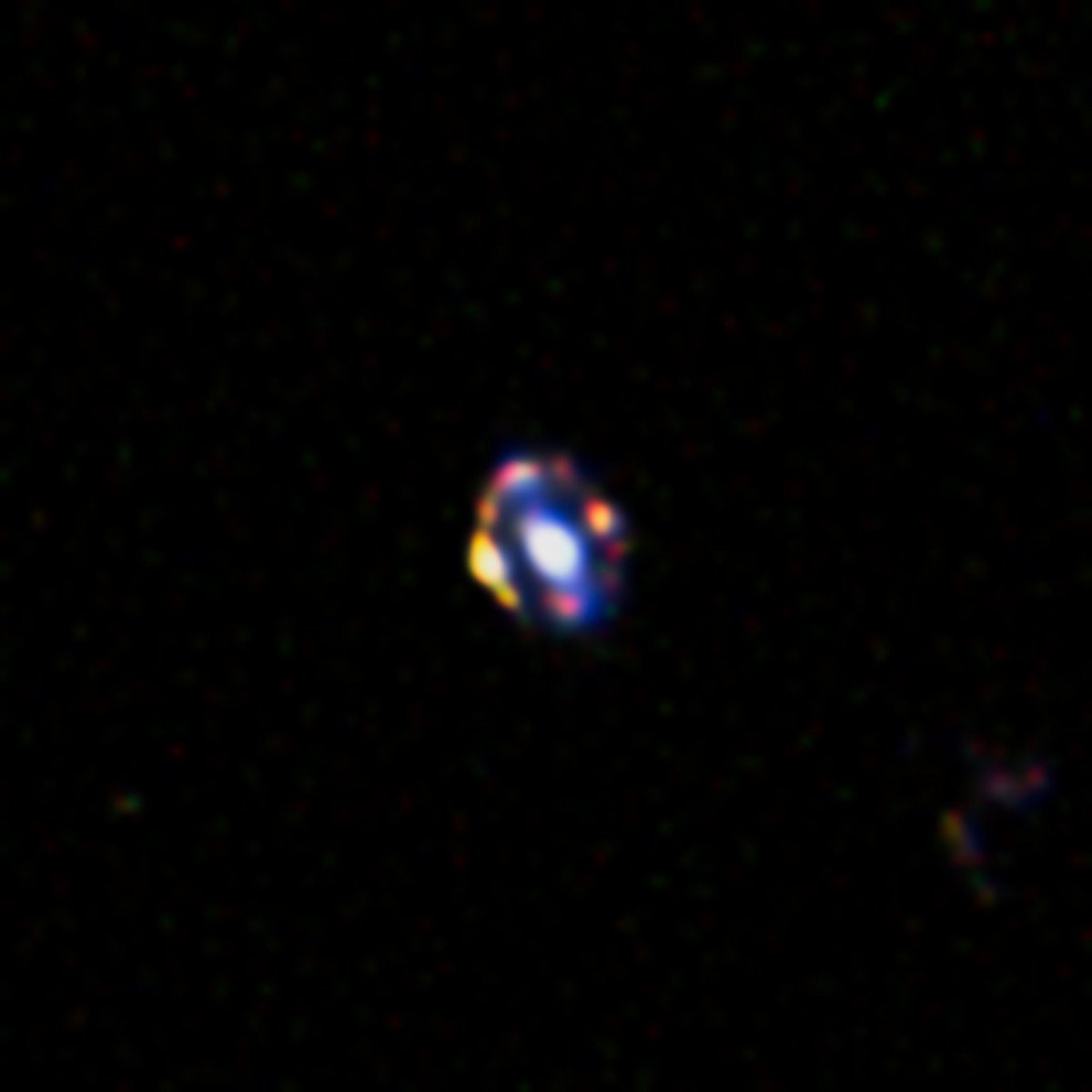
Behold the cosmic cradle captured in our #HubbleTopImage: a far-flung protocluster of galaxies shimmering in the ancient void Peering through the veil of near-infrared light in a sweeping sky survey, the mighty NASA/ESA Hubble Space Telescope has unveiled a tight-knit group of…

Our #HubbleTopImage pinpoints a distant protocluster of galaxies 🌌 In a sky survey made in near-infrared light, Hubble spotted five galaxies clustered together. They are so distant that their light has taken 13.1 billion years to reach us! 1/2

تتميز #HubbleTopImage لدينا بمجرة وحش 👹 التي ربما أثارتها شقاوة #الثقب_الأسود تم التقاط هذا المنظر للمجرة البيضاوية A2261-BCGبواسطة #تلسكوب هابل الفضائي #وكالة_ناسا/إيسا عام 2012 تمتلك المجرة نواة منتفخة تبلغ حوالي 10,000سنة ضوئية عبرها-أكبر بحوالي3 مرات من مركز المجرات المشابهة

Our #HubbleTopImage features a monster galaxy 👹 that may have been stirred up by black-hole mischief! This view of the elliptical galaxy A2261-BCG was captured by Hubble in 2012. The galaxy has a puffy core measuring about 10,000 light-years across – about three times larger…

Our #HubbleTopImage features the glittering jewels of Messier 9 Messier 9 is a globular cluster located close to the centre of the Milky Way. This ball of stars is too faint to see with the naked eye, but the NASA/ESA Hubble Space Telescope can see over 250,000 individual ⬇️

Our #HubbleTopImage features the glittering jewels of Messier 9 💎 Messier 9 is a globular cluster located close to the centre of the Milky Way. This ball of stars is too faint to see with the naked eye, but Hubble can see over 250,000 individual stars shining in it! 1/2

Hubble unmasks a ghost galaxy 👻 in this #HubbleTopImage Astronomers used Hubble to unmask the dim dwarf galaxy Leo IV, which is practically invisible, its stars virtually indistinguishable from the background. 1/3

Nuestra #HubbleTopImage muestra un géiser de gas caliente que fluye de una estrella recién nacida. 👶💫 1/3 👇
Our #HubbleTopImage features a panoramic view of a star-forming region ⭐ 30 Doradus resides 170,000 light-years away in the Large Magellanic Cloud. No known star-forming region in our galaxy is as large or as prolific! Read more: ow.ly/oXxn50X8jnE

Our #HubbleTopImage is a classic portrait of a barred spiral galaxy 🌌 Hubble’s image of NGC 1073 is, in many ways, the archetypal portrait of a barred spiral. However, there are a few quirks here… 1/3

Das #HubbleTopImage findet einen versteckten Schatz in der Großen Magellanschen Wolke! LHA 120-N 11, hier zu sehen, ist ein besonders heller Sternentstehungsbereich, der aus mehreren Gasblasen und Sternentstehungsgebieten besteht. Mehr dazu: esahubble.org/news/heic1301/ 📷: @NASA,…
esahubble.org
A hidden treasure in the Large Magellanic Cloud
Nearly 200 000 light-years from Earth, the Large Magellanic Cloud, a satellite galaxy of the Milky Way, floats in space, in a long and slow dance around our galaxy. Vast clouds of gas within it...
Our #HubbleTopImage digs up hidden treasure 💎 in the Large Magellanic Cloud! LHA 120-N 11, seen here, is a particularly bright star-forming region, consisting of several pockets of gas and star formation. 1/3

Our #HubbleTopImage digs up hidden treasure 💎 in the Large Magellanic Cloud! LHA 120-N 11, seen here, is a particularly bright star-forming region, consisting of several pockets of gas and star formation. 1/3

🔭 Amid clouds of gas and cosmic dust, the Horsehead Nebula endures, its pillar standing firm in the void. A stellar witness to the strength and fragility of the universe. 💫 #HubbleTopImage #StarLife #Discovery
🔭 Entre nubes de gas y polvo cósmico, la Cabeza de Caballo resiste el paso del tiempo, mostrando un pilar firme en medio del vacío. Un testigo estelar que nos habla de la fuerza y fragilidad del universo. 💫 #HubbleTopImage #VidaDeEstrella #Descubrimiento
This #HubbleTopImage was once the deepest-ever view of the Universe! It was assembled from ten years of Hubble observations taken of a patch of sky within the original Hubble Ultra Deep Field. 1/3

Our #HubbleTopImage revisits the Ring Nebula! From Earth’s perspective, the nebula appears like a simple elliptical shape. Observations combining ground-based data and Hubble data, however, revealed that it is more like a doughnut 🍩 1/3

Our #HubbleTopImage features strobe flashes from a young star 🌟 Every 25.34 days, the protostar LRLL 54361 unleashes a burst of light – possibly due to the interactions between two newly formed stars that are gravitationally bound. 1/3

Our #HubbleTopImage features a distant gravitational lens! 🔍 The circle of light in this image is formed by the light of a distant starbursting dwarf galaxy being projected and magnified by the gravity of a nearer galaxy. 1/3

Our #HubbleTopImage features a panoramic view of a star-forming region ⭐ 30 Doradus resides 170,000 light-years away in the Large Magellanic Cloud. No known star-forming region in our galaxy is as large or as prolific! Read more: ow.ly/oXxn50X8jnE

Our #HubbleTopImage features the glittering jewels of Messier 9 💎 Messier 9 is a globular cluster located close to the centre of the Milky Way. This ball of stars is too faint to see with the naked eye, but Hubble can see over 250,000 individual stars shining in it! 1/2

Our #HubbleTopImage pinpoints a distant protocluster of galaxies 🌌 In a sky survey made in near-infrared light, Hubble spotted five galaxies clustered together. They are so distant that their light has taken 13.1 billion years to reach us! 1/2

Hubble unmasks a ghost galaxy 👻 in this #HubbleTopImage Astronomers used Hubble to unmask the dim dwarf galaxy Leo IV, which is practically invisible, its stars virtually indistinguishable from the background. 1/3

This #HubbleTopImage was once the deepest-ever view of the Universe! It was assembled from ten years of Hubble observations taken of a patch of sky within the original Hubble Ultra Deep Field. 1/3

Our #HubbleTopImage digs up hidden treasure 💎 in the Large Magellanic Cloud! LHA 120-N 11, seen here, is a particularly bright star-forming region, consisting of several pockets of gas and star formation. 1/3

Our #HubbleTopImage is a classic portrait of a barred spiral galaxy 🌌 Hubble’s image of NGC 1073 is, in many ways, the archetypal portrait of a barred spiral. However, there are a few quirks here… 1/3

Our #HubbleTopImage features the glittering jewels of Messier 9 Messier 9 is a globular cluster located close to the centre of the Milky Way. This ball of stars is too faint to see with the naked eye, but the NASA/ESA Hubble Space Telescope can see over 250,000 individual ⬇️

Our #HubbleTopImage revisits the Ring Nebula! From Earth’s perspective, the nebula appears like a simple elliptical shape. Observations combining ground-based data and Hubble data, however, revealed that it is more like a doughnut 🍩 1/3

Our #HubbleTopImage features a monster galaxy 👹 that may have been stirred up by black-hole mischief! This view of the elliptical galaxy A2261-BCG was captured by Hubble in 2012. The galaxy has a puffy core measuring about 10,000 light-years across – about three times larger…

Our #HubbleTopImage captures the planetary nebula PN Hb 12! 🦋 Its butterfly-like structure formed as a Sun-like star approached the end of its life and puffed its outer layers into the surrounding space. 1/3

A cosmic celebrity takes centre stage in our #HubbleTopImage 🐴⭐ This image of the Horsehead Nebula, which was captured to celebrate Hubble’s 23rd year in orbit, shows the region in infrared light. 1/3

Our #HubbleTopImage features the massive galaxy cluster Abell 1689! Abell 1689 acts like a cosmic lens 🔍 magnifying the light from objects lying behind it and making it possible for astronomers to explore incredibly distant regions of space. 1/3

Our #HubbleTopImage features a distant gravitational lens! 🔍 The circle of light in this image is formed by the light of a distant starbursting dwarf galaxy being projected and magnified by the gravity of a nearer galaxy. 1/3

Our #HubbleTopImage catches two galaxies in close encounter! This pair is known as Arp 142. When two galaxies stray too close, they begin to interact – in some cases they merge 🤝 in others, they are ripped apart. 1/2
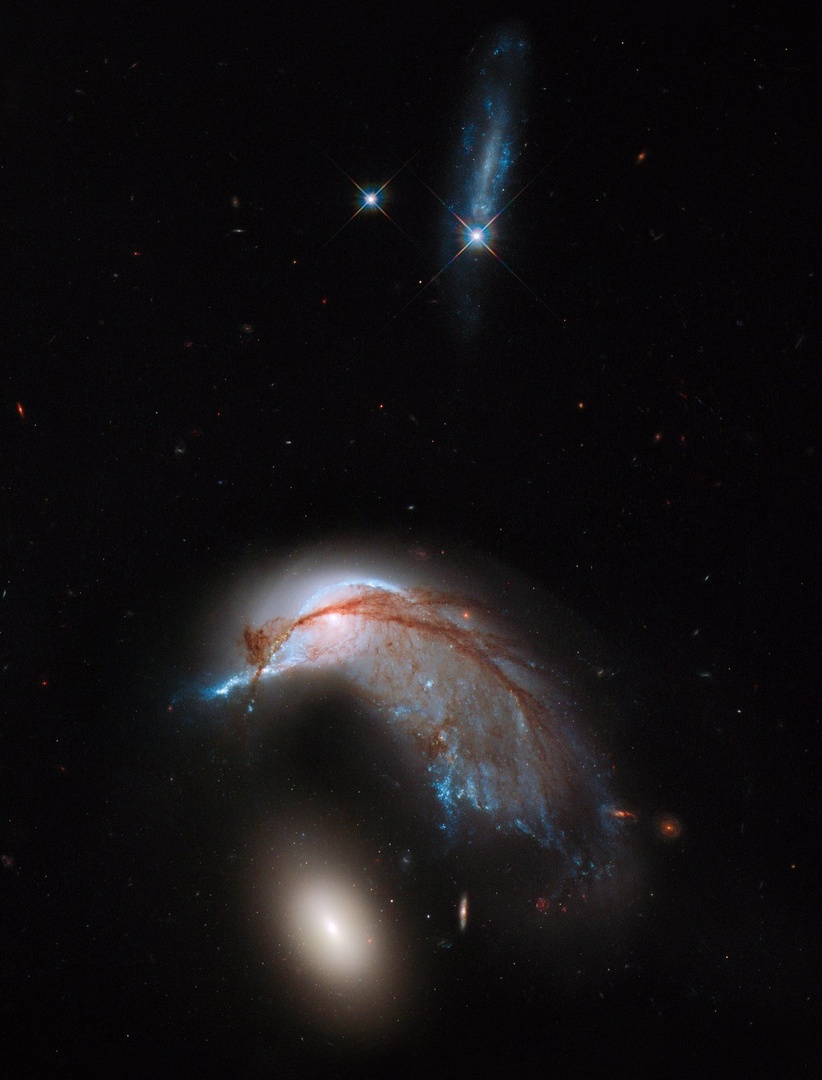
Our #HubbleTopImage features a spiral galaxy with a secret 🤫 Located just over 20 million light-years away, Messier 106 is one of the nearest spiral galaxies to our own. Despite its typical appearance, it hides a secret at its centre… 1/3

Our #HubbleTopImage features strobe flashes from a young star 🌟 Every 25.34 days, the protostar LRLL 54361 unleashes a burst of light – possibly due to the interactions between two newly formed stars that are gravitationally bound. 1/3

Our #HubbleTopImage features a spectacular light show! 🎆 RS Puppis is a type of variable star known as a Cepheid variable. They pulsate relatively slowly – this one varies in brightness by almost a factor of five every 40 or so days.

Something went wrong.
Something went wrong.
United States Trends
- 1. Cheney 70K posts
- 2. Sedition 132K posts
- 3. First Take 44.4K posts
- 4. Treason 79.6K posts
- 5. Mark Walter 1,035 posts
- 6. Jeanie 1,341 posts
- 7. Cam Newton 3,664 posts
- 8. Trump and Vance 34.4K posts
- 9. #WeekndTourLeaks 1,441 posts
- 10. Seditious 68.5K posts
- 11. Constitution 98.6K posts
- 12. Commander in Chief 43.3K posts
- 13. Shayy 11K posts
- 14. Coast Guard 16.2K posts
- 15. #ExpediaChat 1,171 posts
- 16. Nano Banana Pro 20.9K posts
- 17. #Geeksgiving25 N/A
- 18. Dameon Pierce N/A
- 19. Stephen A 40.7K posts
- 20. Bush 62.3K posts

